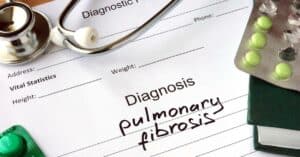Many people view meditating as a form of religious or spiritual practice, but in can also be performed for a variety of personal reasons and can have positive benefits on your health.
Individuals with chronic obstructive pulmonary disease (COPD) or other forms of lung disease that also practice meditation have reported an improved sense of well-being and mood.
It can be difficult to turn off your active mind, but once you have achieved meditation you will be left feeling refreshed and energized.
In its truest form, meditation is simply the act of stopping and being present with one’s self, and many traditional and nontraditional medicines now utilize meditation as a supplement to an overall care plan.
By regularly practicing daily meditation for COPD, you can achieve positive effects on your immune, endocrine and nervous system. You can also improve your sleep patterns, manage your breathing more effectively, reduce depression and anxiety, and increase your energy levels.
There are no negative side effects from practicing meditation, and it’s something that you can easily do each day without putting stress on your lungs.
However, before you get started, make sure you’re choosing a meditation type that is right for you. Also, make sure to discuss your daily meditation practice with your physician. And remember meditation should never be used in place of your conventional medical treatment.
The following are five types of daily meditation for COPD:
1. Mantra Meditation
When you think about meditation, this is probably the form that comes to mind. In this type of meditation, the person chants mantras, or words, repeatedly in order to focus the mind on something rather than itself.
If you’ve ever practiced yoga before, you’ve probably chanted or heard people around you chanting the mantra “om.” Mantra meditation is a good choice for people in the earlier stages of lung disease progression, as it may leave later stage sufferers feeling out of breath.
According to an article in the Huffington Post, one study evaluated 29 people with COPD who trained in the art of yoga, meditation and relaxation twice a week for 4 weeks, and subsequently an hour a week every 2 weeks over the course of 8 weeks.
They found that participants’ lung functioning, inflammation and quality of life all had improved at the 12-week mark.
Professor and head researcher Dr. Randeep Guleria said, “We found that yoga can be a simple, cost-effective method that can help improve quality of life in patients with COPD.”
2. Mindfulness Meditation
Mindfulness meditation is probably the best choice for anyone suffering with COPD or lung disease, no matter the stage of your disease.
This daily form of meditation involves being mindful, or aware, of all of the activities and sounds around you. If you’re sitting in your living room, turn off your thoughts about your day. Listen to the sounds of birds chirping outside, maybe a car door slamming or the sound of children playing.
Focus your mind on progression of time between these sounds. This type of “flow” meditation allows the mind to move from one thing to another, keeping it active, yet allowing you to relax and release the stress of the day.
In one Mayo Clinic study, a patient with severe lung disease who underwent lung surgery reduced his or her hospital stay by 3 days by practicing mindful meditation in the days prior to the procedure.
In an additional study on the same topic, Mayo Clinic researcher Dr. Roberto P. Benzo said, “Our findings show that if patients with severe COPD have the perception that their health is not good, they will be twice as likely to seek emergency care and be hospitalized.
When a person is sad or anxious, it influences the way they think about their situation. It turns out perception is a more reliable predictor of hospitalization than physiological tests, such as lung function or walking tests.
Mindfulness—being completely present and seeing things as they really are, not as we want them to be—can, therefore, help improve patients’ perceptions and, consequently, their health outcomes.”
One of the greatest benefits of mindful meditation is that you don’t have to be sitting crossed legged on a mat to perform it. You can practice this form while doing different types of daily activities like doing laundry or washing the dishes.
By being mindful of the sounds around you and the physical sensations of your body, you can achieve mindful meditation and take your thoughts away from your disease.
3. Focused Meditation
Is it hard for you to shut of your mind completely? This form of meditation calls for the individual to just focus on one thing, whether it’s a word, object or sound.
Put on some soothing music, sit or rest in a room where you can relax, and focus on whatever subject works for you. This form of daily meditation is a good starting place for beginners!
You might be surprised how energized you feel afterward.
4. Movement Meditation
This form of meditation involves repetitive soothing movements to relax the mind. Tai Chi is a form of movement meditation that has its roots in eastern medicine and has been practiced since around the 12th century.
If you hate exercise, but are looking for a little bit of daily activity that will also soothe your mind, movement meditation or Tai Chi may be right for you.
5. Spiritual Meditation
If you are religious, spiritual meditation can help you feel relaxed and closer to your higher power. Similar to other styles of meditation, spiritual meditation involves becoming quiet and focused.
By practicing daily meditation you can improve your energy levels, overall mood and quality of life. Unlike other treatments for COPD and lung disease, meditation comes with zero negative side effects and will leave you feeling rested and accomplished.

Christine Kingsley, APRN is the Health and Wellness Director at the Lung Institute where she focuses on providing helpful online resources for people looking for information on various lung diseases, breathing exercises, and healthy lifestyle choices. She advocates for holistic care that involves working with your doctor to explore all options including traditional and alternative care while focusing on diet and exercise as proactive measures.









